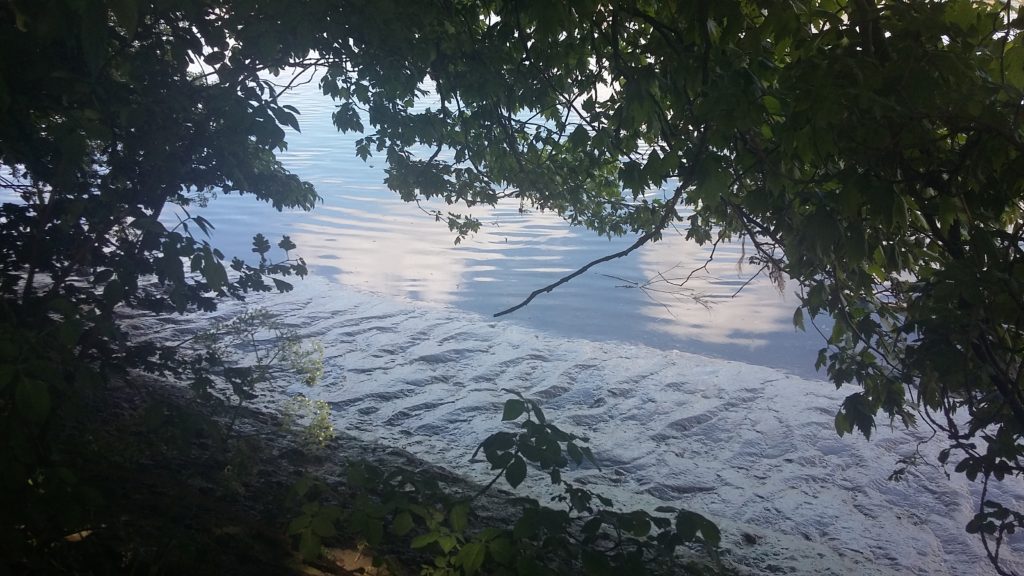
Stage three took me through my home patch – past my house (a mile away) and along the paths that I run, walk or cycle every week. I did wonder whether I would discover anything new, but I found that it did make a difference to be out there with a different purpose. There was woodland again for the first couple of miles, but from Hammersmith bridge onwards, it definitely feels like being in the city again. After Putney bridge this is even more so – apartment towers line both sides of the river and the parks are formal and manicured rather than being wooded wilderness. I came across another friendly Thames explorer – Anita is trying her hand at mudlarking and investigating as much of the foreshore as she can get to. I also chatted to some Fine Arts college students painting in the rain, and a volunteer clean-up crew from Thames21, just finishing up and scrubbing their wellies clean. I also – not completely surprisingly – bumped into a friend from my local running club!

Every so often I wonder why I am so drawn to (obsessed by) writing about water and being by water. It’s not an uncommon trait in a writer. One of my heroes, Alice Oswald, said in an interview once, ‘I can only write about water’; poets, novelists, painters, seem to be endlessly fascinated by water – or maybe it’s just that I am fascinated by art about water? I’ve been reading Peter Ackroyd’s Thames and he has included a lot about river symbolism – purity, fertility, confluence myths, water spirits, and the way poets, writers and artists come to these topics over and over. Does all this develop because of some inherent quality in water itself, or because historically people settled near water for logistical reasons and a river was a handy thing to pin their mythology too?
I’ve always believed that part of the reason I love water of any kind (including rain) is related to growing up through years of drought. Dust, heat, glare, short showers, bucket baths, night-time watering of the garden, wrigglers in the tap water when the tank was low, and then the occasional violent flood that scoured away all the dry topsoil that the anchoring grassroots had long retreated from. This was normal life for me as a child and teenager until I moved to the city (where we still couldn’t water our gardens with abandon but the taps did run a bit more confidently).

The last year before we moved to London was one of the worst and people were tearing up their front lawns (dirt) and replacing them with paving or artificial grass. Flying into Melbourne in December was a patchwork of shades of brown, flying into Heathrow, no matter what time of year, is green and green and green. I truly can’t get enough of it. And to live near a river that fills up to the brim every day with such sheer abundance of water does something to my heart. I feel disappointed when I happen on the river at low tide, and utter delight if the towpath floods. I choose holidays that take me to the coast, or to rivers, and I pick travel routes that allow me to change buses on Putney Bridge and linger for a while watching the flow. I write about water, and design projects around water, and manage to sneak water into things that aren’t about it (poem-about-the-moon assignment? Here’s one on spring tides). And yes, I celebrate when it rains.

Stage three stats
Weather: Sunny to begin with, humid, clouding over later and raining for the last half hour
Distance: 8 miles by the river (not by the most direct routes, lots of sidetracking and crossing bridges), 0.5 miles commute
Stops: Barnes Rail (start), Hammersmith Bridge, The Blue Boat pub, dabbling in the mud under Putney Bridge, Cake Boy for coffee at Battersea Reach, Battersea Bridge (finish)
Highlights: Friendly people out by the river, 5 goslings, barges resting in the mud at low tide, a bright yellow football among the foreshore debris